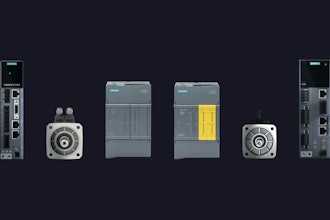
 LaQuita Donald, CHMM, CDGP, Motion Industries
LaQuita Donald, CHMM, CDGP, Motion IndustriesThe first Lithium “metal” battery was introduced into the commercial market in 1970. Emerging advances in electrochemical technologies in 1991 gave way to the Lithium “ion” battery and the evolution of the lithium “ion polymer” battery — used today in many consumer portable devices, tools and equipment. The evolution of these batteries has led to their increased usage for industry applications, increased longevity of the products they are used in, and becoming a preferred power source due to their high energy and power capacities.
Lithium batteries provide many advantages that serve to increase product and power efficiency; however, because of the disadvantages identified in the use of lithium batteries, potential hazards pose risks to the user. To reduce the occurrence of safety issues, the Hazardous Materials (HazMat) community has worked diligently to ensure the safe handling, storage, and transportation of these batteries. In order to construct effective controls to reduce potential hazards and risks, it is necessary to understand the basic chemical and physical composition of these batteries.
Lithium Metal Battery — uses metallic lithium as the anode and magnesium dioxide as the cathode. This battery also contains the salt of the lithium dissolved in an organic solvent. These batteries are known as primary batteries and can be subject to overheating and rapid discharge issues. These batteries are nonrechargeable.
Lithium Ion Battery — uses lithium ions that move from the negative electrode to the positive electrode during discharge, then back to the original position during charging. This battery technology uses two electrodes (one that is usually flammable) and an electrolyte as its major components. These batteries are known as secondary batteries and can be subject to thermal runaway and cell rupture. These batteries are rechargeable.
Lithium Ion Polymer Battery — uses a polymer electrolyte made with a high conductivity semi-sold gel. This battery technology uses four main components: positive electrode, negative electrode, separator and electrolyte. These batteries are also known as secondary batteries and can be subject to overcharging, over-discharge, and over-temperature, which causes swelling at high levels during state of charge. These batteries are rechargeable.
While the differences between these types of batteries are quite notable, they do share some similar characteristics:
- Short circuit
- Dangerous evolution of heat
- Violent rupture
- Explosion
- Fire
Since each or all of these conditions can lead to a catastrophic event, it is important to observe best management practices with respect to handling and storage. It is also a best practice to develop an understanding of the transportation regulations that govern the movement of these batteries through various modes of transportation since the above conditions may impact the shipment.
Handling and Storage
Batteries and equipment in which the battery itself is contained or packaged with should be handled with care and stored in a cool, dry area away from direct sunlight. Even though some batteries are used in environments that may generate heat or provide exposure to weather elements, it is important to know the specific heat limitation of the battery and to not expose or stress the battery beyond its capabilities.
Adequate ventilation is important during the charging process for rechargeable batteries. Use the vendor-supplied charging cables or an authorized replacement to reduce the risk of fire.
Once the battery has been depleted of energy, it should not be placed in the municipal trash for collection; recycle or dispose the battery as universal waste following local, state and federal regulations.
Transportation
When using any mode of transportation, it is important to note that most lithium batteries and the equipment powered by them are regulated HazMat and require training, classification, packaging, marking, labeling and documentation in order to comply with the regulations.
The exceptions that exist in the regulations are valuable tools for the HazMat Shipper. However, use careful discretion and interpretation when applying them to ensure the same level of safety as provided for in the initial regulations.
The regulations that govern the movement of lithium batteries have undergone some dramatic changes as seen in the harmonization of the ground regulations with the International Civil Aviation Organization (ICAO) Technical Instructions and the International Maritime Dangerous Goods (IMDG) Code. This harmonization ensures that each mode (ground, air and vessel) is using the same language to identify and communicate the hazard as well as developing standard operating procedures.
Once we understand the “science” of lithium batteries, it is easy to handle these batteries in a more consistent, efficient and safe manner without incident or injury.
LaQuita Donald, CHMM, CDGP, is the Environmental and Hazardous Materials Compliance Manager at Motion Industries and has worked in the hazardous material area for 12 years.





















